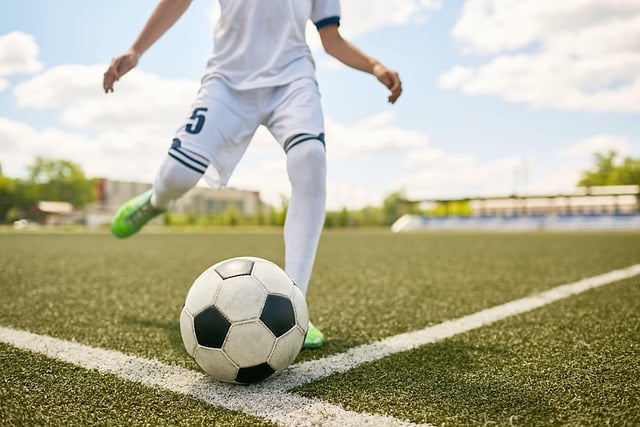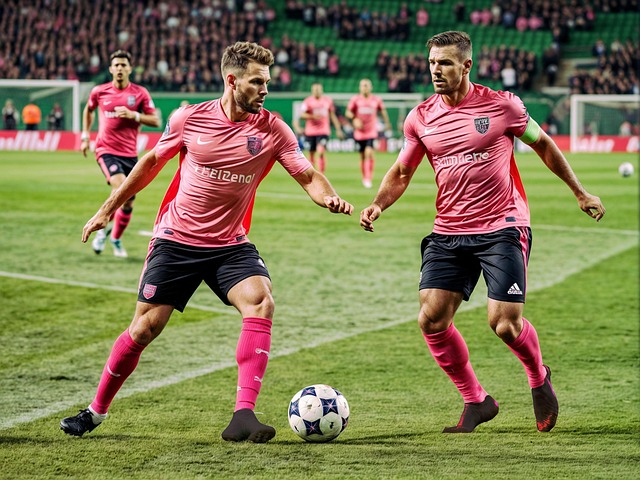When you watch the world’s best soccer players sprint down the field, dodge defenders with ease, and unleash perfect shots on goal, it’s easy to forget just how much hard work and training goes into achieving such peak performance. Soccer is a game of skill, strategy, and agility, and to truly excel, players need to focus not only on their technical abilities but also on their physical fitness. To become a top-tier soccer player, you need to commit to a holistic fitness routine that includes strength training, endurance workouts, speed drills, and more.
In this article, we’ll break down essential soccer fitness training tips that can help players at every level improve their cardiovascular fitness, flexibility, and overall athleticism. These tips will not only increase your performance on the pitch but also enhance your recovery, prevent injuries, and set you on the path toward becoming the best player you can be.
1. Soccer Strength Training: Power and Precision
When people think of soccer strength training, they often picture bulging muscles or the kind of brute force that’s more suited for football or rugby. However, soccer strength is all about functional power—the kind of strength that allows you to make precise tackles, win headers, and maintain your balance when under pressure.
Strength training in soccer should focus on your core, legs, and upper body. Building strength in these areas allows you to have more control and explosiveness on the field. Squats, lunges, and deadlifts are some of the best exercises to build leg strength, while exercises like planks and Russian twists will strengthen your core. Don’t forget your upper body! Push-ups and pull-ups are great for building shoulder and arm strength, which is crucial when holding off opponents or shielding the ball.
Personal Insight: I remember the first time I dedicated myself to strength training specifically for soccer. At first, I focused only on leg exercises—after all, that’s where all the power comes from, right? But soon, I realized that my core needed just as much attention. It made a huge difference in my game, especially in terms of balance and agility when trying to control the ball.

2. Endurance Workouts: Lasting the Full 90 Minutes
Soccer matches are grueling, requiring players to maintain a high level of intensity for 90 minutes or more. To be at your best throughout the entire match, you need to have excellent cardiovascular fitness. Endurance workouts are essential for building the stamina needed to keep going at full speed, even in the dying minutes of the game.
Long-distance running is a good start, but interval training should be the bread and butter of your endurance regimen. High-intensity interval training (HIIT) combines short bursts of intense activity with recovery periods. For example, you could sprint for 30 seconds, jog for 30 seconds, and repeat this for 10 to 15 minutes. This mirrors the stop-start nature of soccer and can help improve your ability to recover quickly between intense efforts.
Another great way to build endurance is to mix in agility drills that involve a lot of lateral movement—this simulates the constant changes in direction that occur during a soccer game.
Personal Insight: I used to think I could get away with just doing long runs to build endurance, but once I started incorporating HIIT into my routine, I noticed a massive difference in my ability to keep my speed up throughout an entire game. Not only did I last longer, but my recovery time between sprints also improved.
3. Speed Drills: Blazing Past Your Opponents
Speed is often the difference between a great player and a good player. Whether you’re sprinting for a through ball or closing down an opponent, speed drills should be a key part of your training routine.
Start with basic sprint intervals—10 to 20-meter sprints at maximum effort, followed by a short recovery period. As you improve, gradually increase the distance and decrease the rest time. Ladder drills and cone drills are also excellent for improving footwork and acceleration, helping you to change direction quickly and with control.
Speed and agility go hand in hand, so try to incorporate agility ladders and cone drills into your routine to improve footwork. These drills not only help with speed but also with precision and coordination, essential for dribbling past defenders or winning the ball in tight situations.
Personal Story: I can still remember the first time I worked on speed drills. At first, I felt like a deer on ice—uncoordinated and out of breath. But over time, as I honed my technique and built endurance, I noticed myself outrunning defenders I once struggled to keep up with. It was an incredible feeling to see the results of all that hard work translate into real-world success on the field.
4. Flexibility Exercises: Prevent Injury and Improve Movement
The importance of flexibility exercises cannot be overstated. Soccer players need to move their bodies in a variety of directions, often with explosive power. Having a strong range of motion in your hips, hamstrings, and calves will improve your agility, speed, and overall movement on the field.
Dynamic stretching before training and matches—like leg swings, high knees, and walking lunges—warms up the muscles and prepares them for intense activity. Post-game or post-training, static stretching (holding stretches for 15-30 seconds) helps improve flexibility and reduce muscle tightness.
A tight hamstring or stiff hip flexor can be the difference between scoring a goal or pulling up with an injury. Preventing these issues through consistent stretching is one of the best things you can do for your body.
Personal Insight: After a tough match, I always make sure to stretch my hips and hamstrings. At one point, I was too focused on strength training and speed drills, and I ignored flexibility. It didn’t take long before I started feeling sore and stiff after every game. Stretching has since become a critical part of my routine, and it’s helped me avoid injury and feel more fluid on the ball.
5. Cardiovascular Fitness: Building a Strong Foundation
Good cardiovascular fitness is the foundation of all soccer performance. Without it, your endurance, speed, and recovery will suffer. To maintain peak performance, players need to improve their aerobic capacity, allowing them to last the full game while maintaining high-intensity efforts.
Besides HIIT, incorporating moderate-intensity exercises, such as swimming, cycling, or even brisk walking, can help improve your cardiovascular health without overloading your muscles. The more efficient your cardiovascular system is, the easier it will be to maintain high levels of performance throughout a match.
6. Recovery Techniques: The Unsung Hero of Performance
You can work out hard and train until you’re blue in the face, but if you neglect recovery, you’re setting yourself up for burnout and injury. Recovery techniques—like foam rolling, massage therapy, ice baths, and adequate sleep—are critical to maintaining long-term performance.
Foam rolling helps relieve muscle tightness, while ice baths can reduce inflammation and promote faster recovery. Getting enough rest is just as crucial as the workout itself—without sufficient sleep and recovery time, your body won’t have the chance to repair and strengthen.
Personal Story: I used to push myself to the limit, thinking that more training was always better. But after dealing with a few injuries, I quickly learned that proper recovery was just as important as the hard work itself. Now, I make sure to get plenty of sleep, eat well, and prioritize recovery exercises. The difference in how my body feels has been night and day.
7. Injury Prevention: Play Smart, Stay Safe
Injury prevention should be a primary focus for any player looking to achieve peak performance. Soccer is a contact sport, and injuries are part of the game, but many can be prevented by focusing on the right areas.
Regularly incorporating strength training, stretching, and proper warm-ups will help prevent common injuries such as hamstring strains, ankle sprains, and knee ligament injuries. Additionally, always be mindful of proper technique. A player’s form during a sprint, jump, or tackle can make the difference between staying healthy and getting sidelined.
8. Nutrition for Athletes: Fuel Your Performance
You can train like a beast, but without proper nutrition, your body won’t have the fuel it needs to perform at its best. Nutrition for athletes is about fueling your body with the right balance of macronutrients—carbs, protein, and fats—along with the right vitamins and minerals.
Carbohydrates are your primary energy source, so focus on eating whole grains, fruits, and vegetables. Protein is crucial for muscle recovery, so incorporate lean meats, fish, or plant-based protein sources into your diet. Healthy fats, like those found in avocado and nuts, will keep your energy levels up and support overall health.
Final Thoughts: Achieving Peak Performance
Achieving peak performance in soccer is about more than just kicking a ball or learning new tricks. It requires dedication to a comprehensive training routine that includes strength, endurance, speed, flexibility, and recovery. By focusing on these key areas and prioritizing proper nutrition and injury prevention, you can take your soccer game to the next level.
Every top player has their own secret sauce, but at the heart of it all is hard work, smart training, and consistency. So lace up those boots, hit the field, and start working toward your best self. The results will speak for themselves.
Frequently Asked Questions (FAQs)
- What’s the best way to build strength for soccer? Focus on exercises that target your legs, core, and upper body. Squats, lunges, planks, and push-ups are all great options to build functional
strength for soccer.
- How can I improve my cardiovascular fitness for soccer? Incorporate HIIT sessions and moderate-intensity exercises like running, cycling, or swimming. These activities will build endurance and increase your aerobic capacity.
- Why is flexibility so important in soccer? Flexibility helps with mobility, reduces the risk of injury, and allows you to move more fluidly on the field. Focus on dynamic stretching before and static stretching after training or matches.
- How can I recover faster after intense training sessions? Make recovery a priority by getting enough sleep, using foam rolling techniques, and taking ice baths to reduce inflammation. Proper nutrition and hydration are also key for recovery.
- What should I eat before and after a soccer match? Before a game, focus on complex carbohydrates like brown rice or pasta for energy. Afterward, eat a combination of carbs and protein to help muscle recovery—think chicken and sweet potatoes or a protein shake with fruit.



